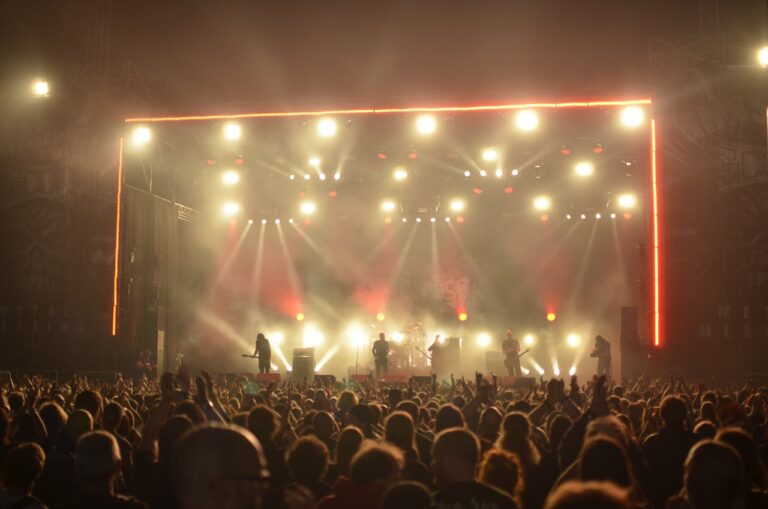
Corporate event planning relies heavily on budgeting, which determines the scale and scope of the event. This task requires a careful balance of strategic foresight and meticulous attention to detail.
As we navigate through the initial stages of defining clear objectives and estimating preliminary expenses, the journey reveals a complex tapestry of potential financial pitfalls and opportunities for cost savings. This nuanced process not only demands a keen understanding of prioritizing spending areas but also agility in identifying and leveraging avenues for economization.
The ensuing discussion aims to unravel the intricacies of this financial balancing act, inviting a deeper exploration into the art of crafting a budget that aligns with both ambition and prudence.
Define Your Objectives
Before delving into the intricacies of budget creation for a corporate dinner or event, it is imperative to first articulate clear objectives, setting a foundation for a strategically aligned and successful occasion. This initial phase is pivotal, as the clarity of purpose directly influences every subsequent decision, from venue selection to marketing strategies. Defining objectives requires a deep dive into the event’s ultimate goals: Is it to foster networking, celebrate achievements, launch a product, or perhaps to educate? The answer to this question will not only guide the thematic and logistical aspects but also ensure that every dollar spent is a step towards achieving these predefined goals.
A narrative-driven approach to this process involves stakeholders in a story where their needs and expectations shape the event’s blueprint. This collaborative journey fosters a sense of ownership and aligns the team towards a common vision. Moreover, it aids in prioritizing expenses, distinguishing between ‘must-haves’ and ‘nice-to-haves,’ based on their contribution to the event’s objectives. By embedding the event’s purpose at the core of budgetary considerations, organizers can navigate the complex waters of financial planning with a compass that consistently points towards strategic value and impact.
Estimate Initial Costs
Having established clear objectives for the corporate event, the next critical step involves estimating initial costs to ensure financial resources are allocated efficiently and effectively. This phase is crucial as it sets the groundwork for all subsequent budgeting decisions, shaping the event’s financial blueprint. Initial cost estimation is not simply about listing expenses; it’s an intricate process that demands a deep understanding of the event’s scope, scale, and the quality expectations of stakeholders involved.
To embark on this task, begin by gathering quotes and estimates for the venue, catering, speakers or entertainers, and any technology needs. Remember, accurate cost estimation hinges on thorough research and negotiation skills. It’s also prudent to account for unforeseen expenses by setting aside a contingency fund, typically ranging from 5% to 10% of the total estimated costs. This preemptive measure ensures that you’re prepared for any unexpected financial demands.
Moreover, engaging with multiple vendors to obtain comparative quotes can unearth cost-saving opportunities without compromising the event’s quality. This diligent approach not only aids in refining the initial cost estimate but also provides a clearer financial picture, enabling informed decision-making as the planning process progresses.
Prioritize Spending Areas
Once the initial costs are estimated, strategically prioritizing spending areas becomes the next pivotal step in crafting a budget that aligns with the corporate event’s overarching goals and delivers maximum value. This phase requires a meticulous analysis of the event’s objectives against the backdrop of the available resources. The priority should always be to allocate funds towards elements that directly enhance the attendee experience and achieve the event’s objectives, such as keynote speakers, technology for virtual engagement, or high-quality catering that matches the event’s theme and audience expectations.
Understanding the distinction between must-have elements and nice-to-have features is crucial. Essentials that directly impact the event’s success cannot be compromised, while areas with less direct impact on the event’s goals can be adjusted or even omitted if budget constraints require. This discernment ensures that the budget is allocated in a manner that maximizes attendee satisfaction and engagement, leading to a successful event.
Moreover, prioritizing spending areas involves continuous evaluation and possibly reallocating funds as planning progresses and more detailed cost information becomes available. This dynamic approach allows for flexibility in managing the budget, ensuring that the event can adapt to unforeseen expenses while still focusing on its primary goals.
Identify Saving Opportunities
Identifying opportunities to economize without compromising the quality or objectives of the corporate event is a crucial step in effective budget management. This process requires a keen eye for detail and a creative mindset to explore various avenues for cost reduction. One effective strategy is to negotiate with vendors and suppliers for better rates or packages that still meet the event requirements. This could involve comparing multiple quotes, leveraging existing relationships, or committing to future business in exchange for immediate cost savings.
Additionally, reevaluating the event components for multi-use or alternative purposes can uncover hidden savings. For instance, digital materials can often replace printed ones, not only reducing printing costs but also enhancing the event’s environmental friendliness. Similarly, selecting a venue that provides in-house amenities such as AV equipment and catering can eliminate the need to source these services separately, often at a premium.
Exploring volunteer opportunities or partnerships with other organizations for staffing needs can also significantly reduce expenses. These collaborations can benefit both parties and add a layer of community engagement to the event. By meticulously examining each aspect of the event with a cost-saving lens, planners can uncover substantial savings that contribute to the overall financial health and success of the event without detracting from its impact or attendee experience.
Monitor and Adjust Budget
After pinpointing opportunities to economize, it is imperative to actively monitor and fine-tune the corporate event budget to ensure alignment with financial goals and event objectives. This phase demands a vigilant eye and a proactive stance towards budget management, embracing the fluidity of event planning where unforeseen expenses can emerge, and planned costs can fluctuate.
To adeptly navigate this landscape, it is vital to establish a systematic approach for tracking expenditures in real-time. Utilizing budget tracking tools or software can provide an organized framework to capture every financial transaction, enabling event planners to see at a glance how actual spending aligns with the forecasted budget. This visibility not only highlights discrepancies but also uncovers patterns or trends that might necessitate budget adjustments.
Moreover, maintaining open lines of communication with suppliers and vendors is crucial. Regular check-ins can reveal potential savings or highlight areas where costs may overrun, offering an opportunity to renegotiate terms or seek alternative solutions before expenses spiral.
In essence, the art of budget monitoring and adjustment is a dynamic process, requiring continuous attention and flexibility. It is about making informed decisions, grounded in financial data and guided by the overarching event strategy, to steer the corporate event to a successful and cost-effective conclusion.
Read more posts here.







